Mechanism Of Nucleophilic Acyl Substitution Of The Acyl Derivative
Step by step video & image solution for Mechanism Of Nucleophilic Acyl Substitution Of The Acyl Derivative by Chemistry experts to help you in doubts & scoring excellent marks in Class 12 exams.
Updated on:21/07/2023Similar Questions
Knowledge Check
The mechanism of nucleophilic acyl substitution in the acyl derivative proceedds as follows which among the following is false?
A B
B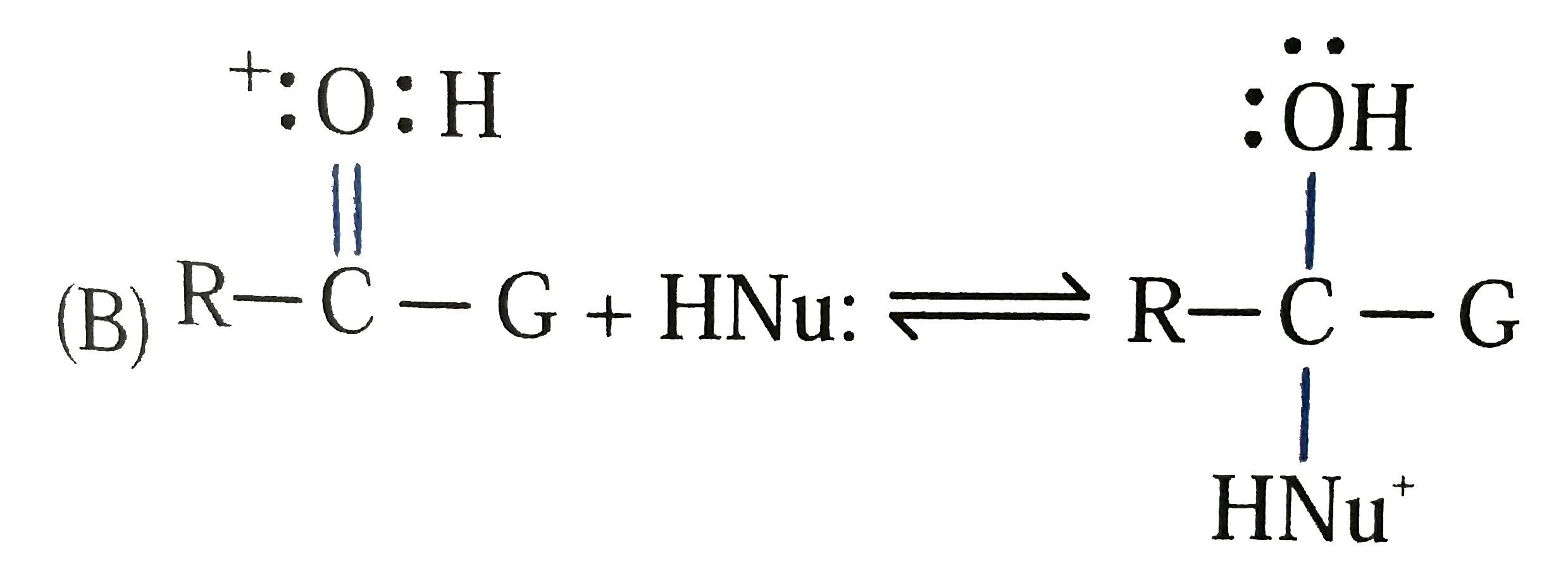 C
C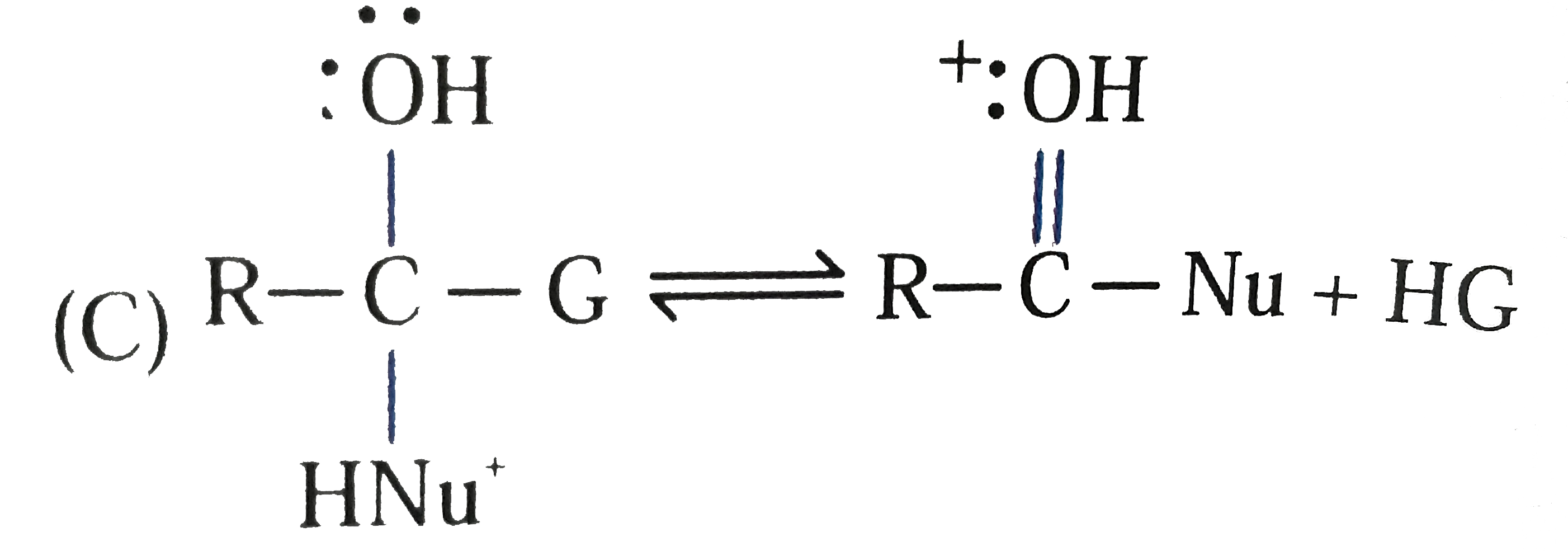 D
D
Arrange the following in the decreasing order of nucleophilic acyl substitution reaction.
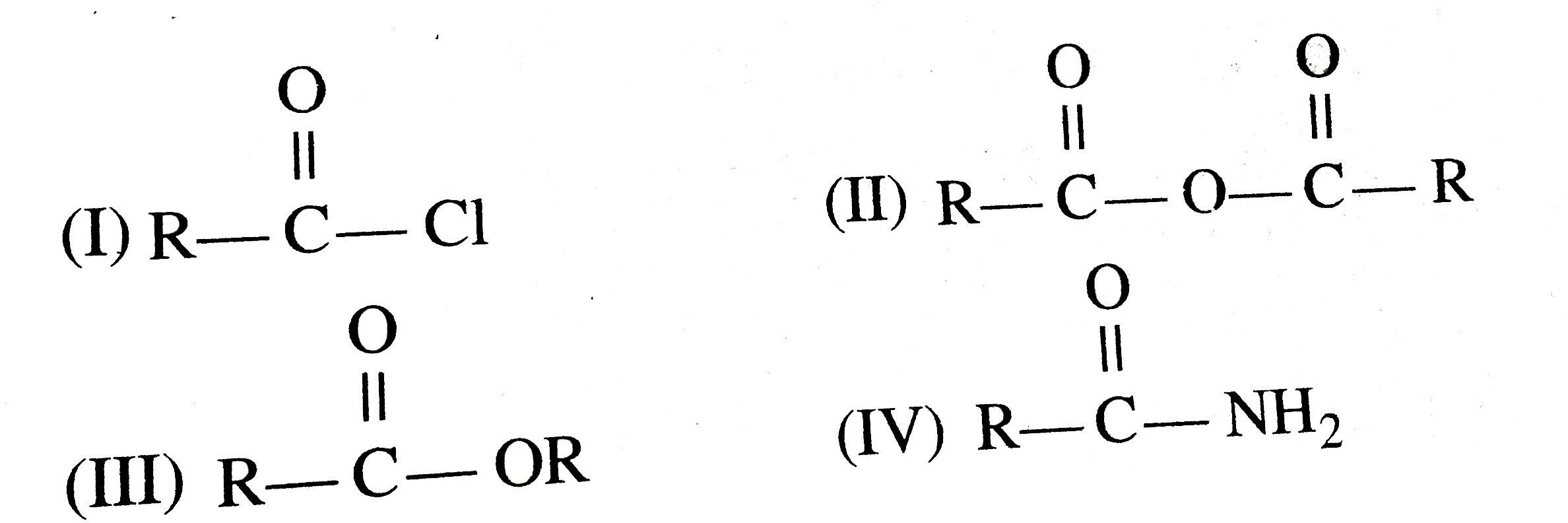 .A(I)>(II)>(III)>(IV)B(IV)>(III)>(II)>(I)C(I)>(III)>(II)>(IV)D(IV)>(II)>(III)>(I)
.A(I)>(II)>(III)>(IV)B(IV)>(III)>(II)>(I)C(I)>(III)>(II)>(IV)D(IV)>(II)>(III)>(I)Amides undergo hydrolysis to yield carboxylic acid plus amine on heating in either aqueous acid or aqueous base. The conditions required for amide hydrolysis are more severe than those required for the hydrolysis of esters, anhydrides or acid chlorides, but the mechanism is similar (nucleophilic acyl substitution). Nucleophilic acyl substitutions involve a tetrahedral intermediate, hence these are quite different from alkyl substitution
(RCH2BrNaCN−−−→RCH2CN)
which involves a pentavalent intermediate or transition state. One of the important reactions of esters is their reaction with two equivalent of Grignard reagent to give tertiary alcohols.
Which of the following constitutes the best substrate during the acidic hydrolysis of amides?AR−O∣∣C−NH2BR−O∣∣C−+NH3CR−OH⊕C∣∣−NH2DR−OH+∣∣C−+NH3
Reaction Mechanism : nucleophilic substitution,1)components OF nucleophilic substitution,a)substrale,b)Leaving groups,c)solvent theory
View SolutionGive the decreasing order of reactivity of the following towards hydrolysis (or nucleophilic acyl substitution) :
(i) (I) PhCOOMe
(II)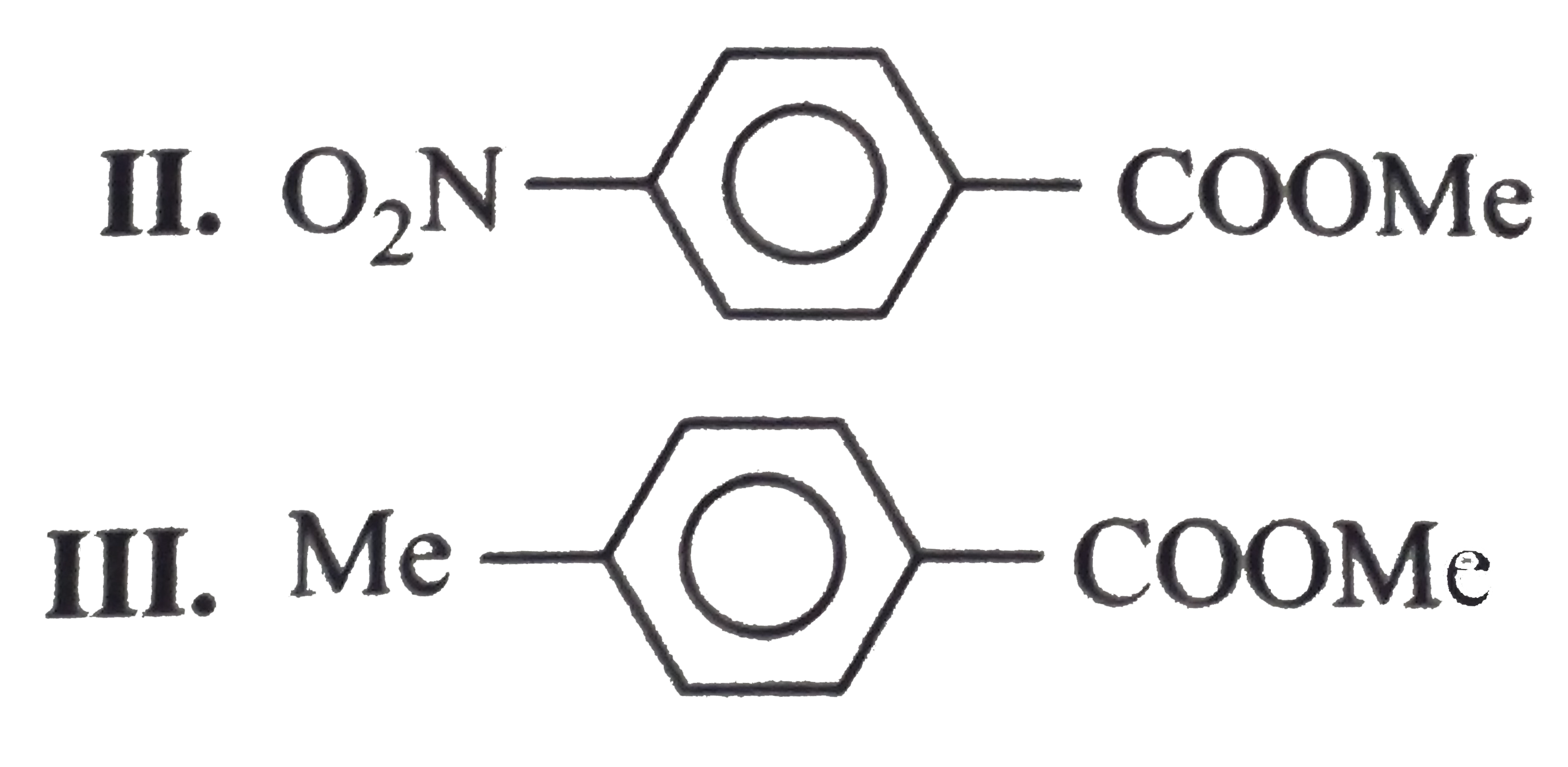
(II)
(IV)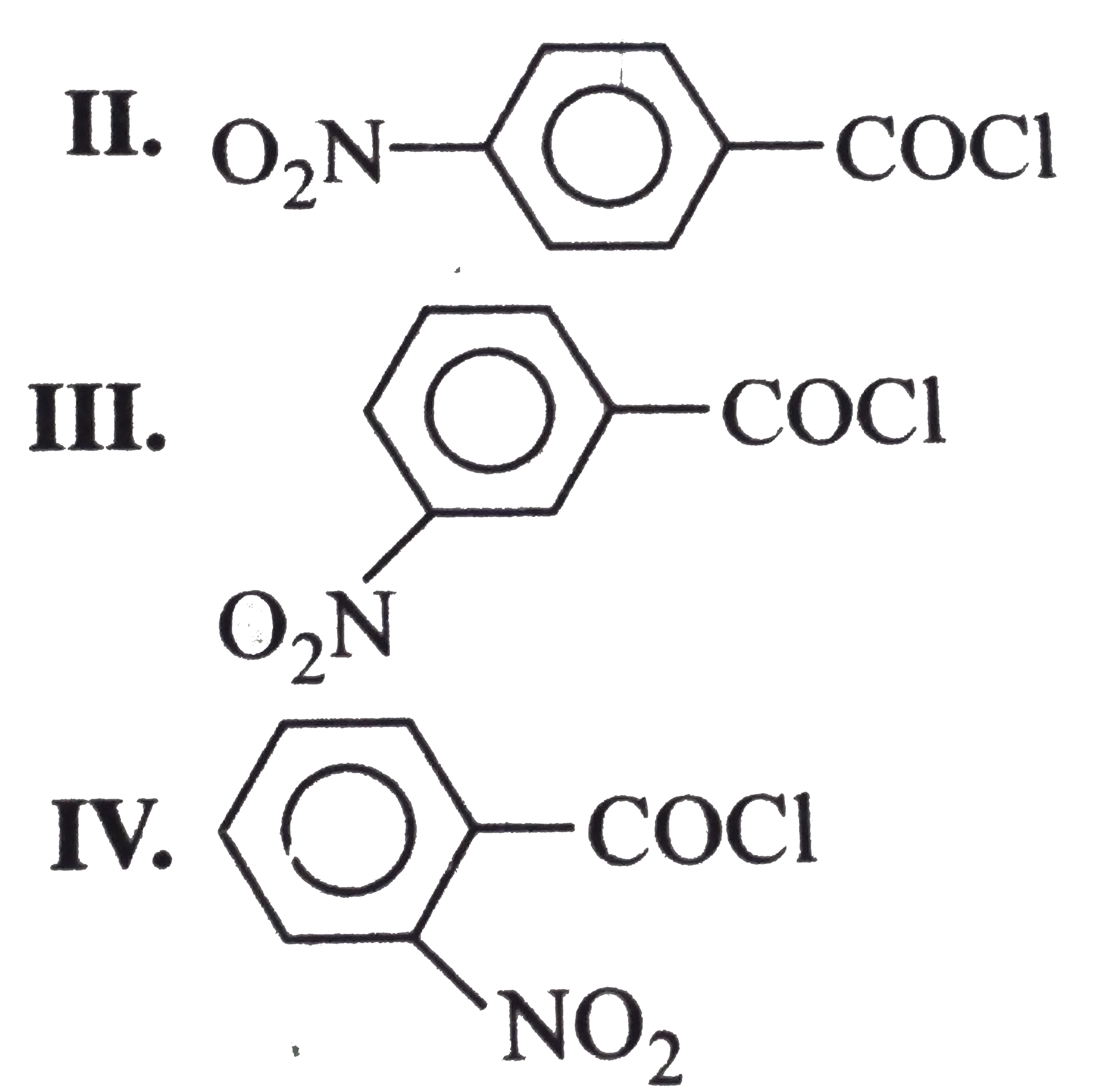
(ii) (I) PhCOCl
(II)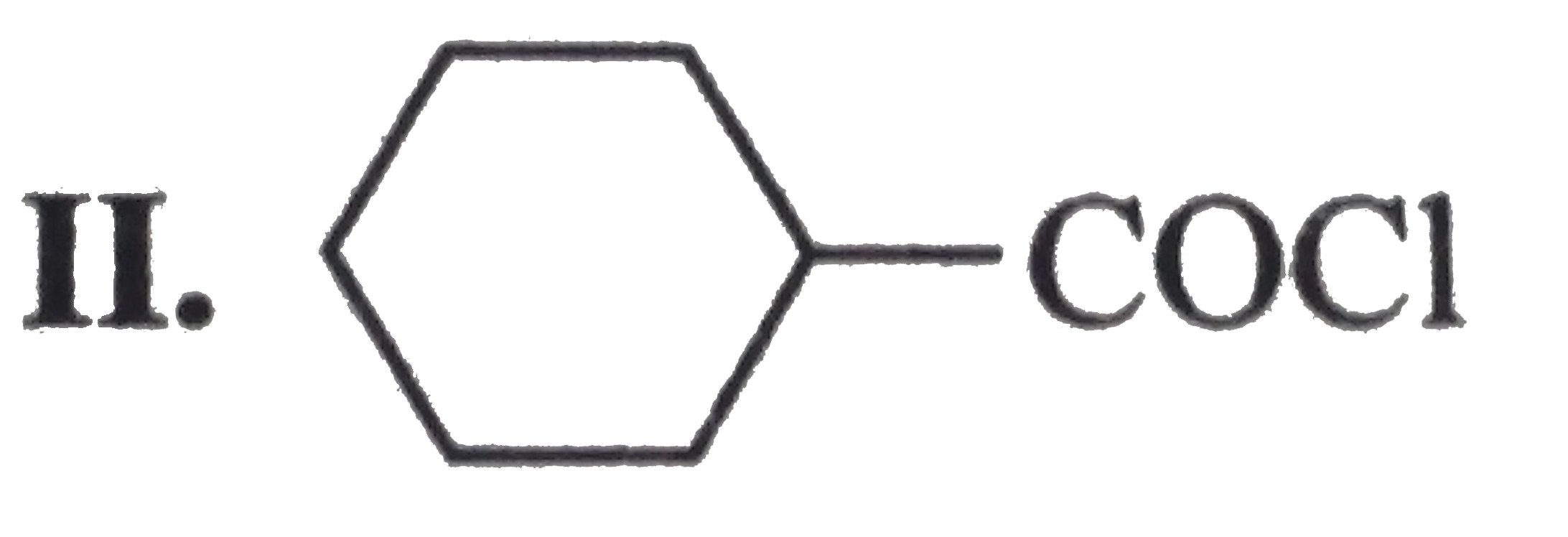
(iii) (I) PhCOCl
(III) Me2CHCOCl
(IV) Me3C−COCl.
(b) Give the decreasing order of transacylation reactivities and nucleophilic acyl substitution reactivities fo the following :
(I) MeCOCl
(II) MeCON3
(III) (MeCO)2O
(IV) MeCOOMe
(V) MeCONH2.
View SolutionReaction Mechanism : nucleophilic substitution,comparison OF sn1 and sn2 reaction
View SolutionAcyl nucleophilic substitution (SNAC) (SNAE)
View SolutionBoth carbonyl compounds and acid derivatives though they contain
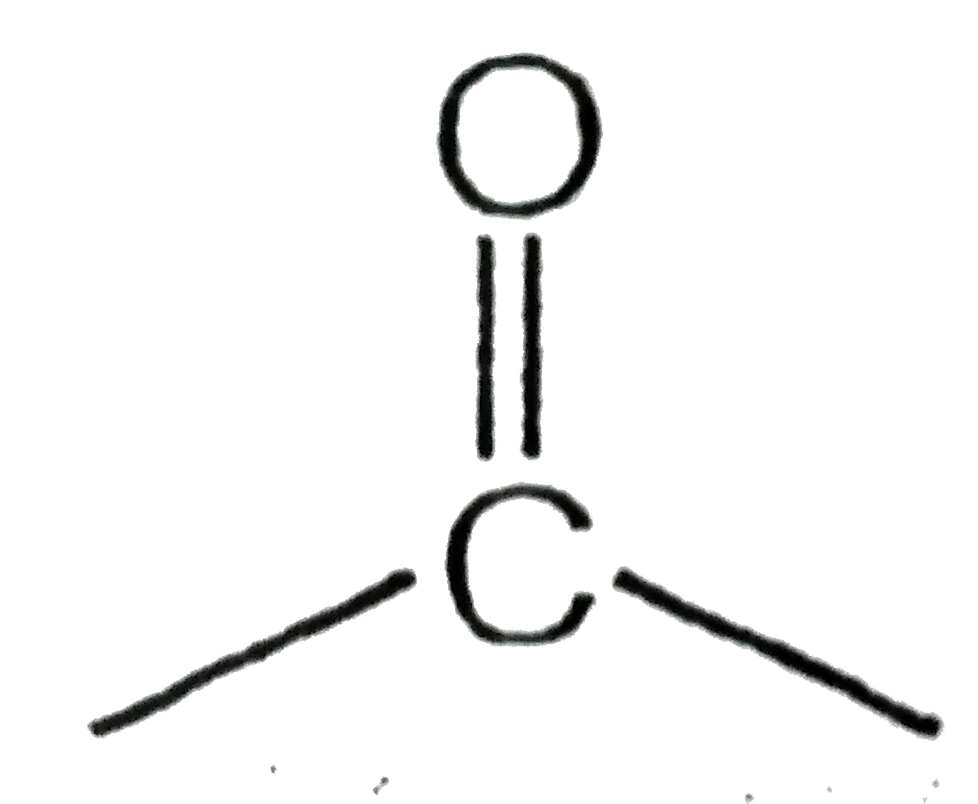 grouping yet the reactions given by them are entirely different.
grouping yet the reactions given by them are entirely different.
As Aldehydes and Ketones give addition product with a nucleophile, while carboxylic acid derivatives give nucleophilic acyl substitution through addition/elimination mechanism.

Where X−=−Cl−O−O∣∣C−R−OR,−NR(R) etc.
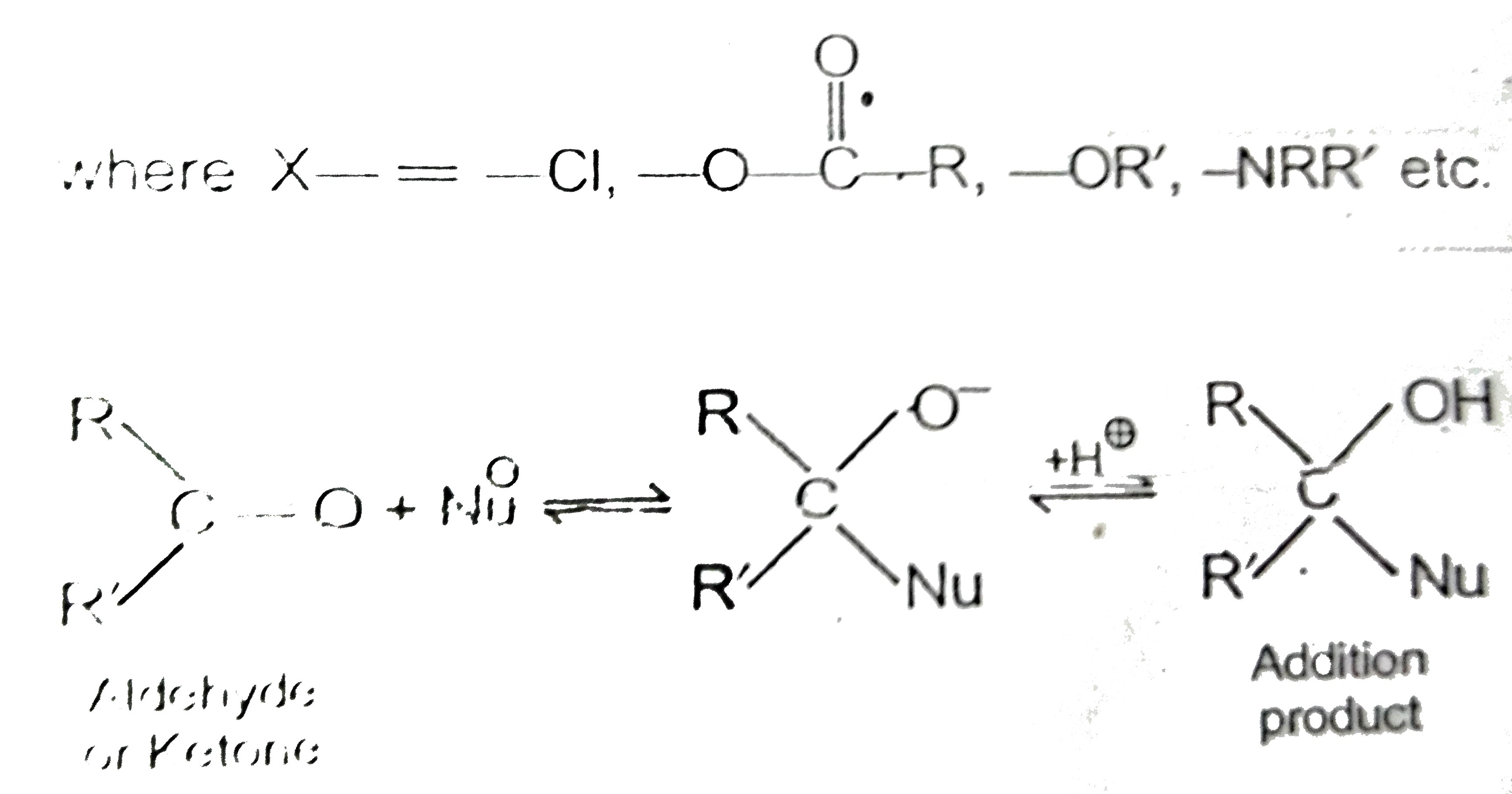
Why aldeydes and Ketones give nucleophilic addition reaction while acid derivatives prefer nucleophilic acyl substititution reaction?
View Solution
